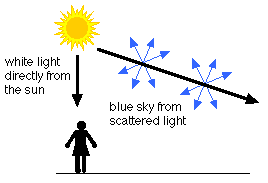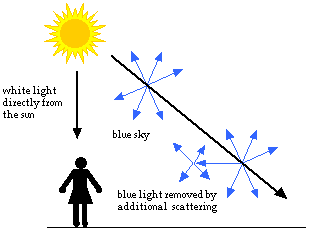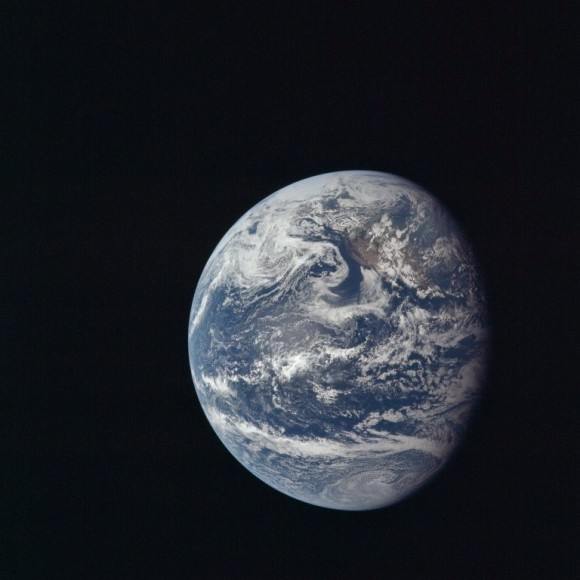Science DefinitionThe word science comes from the Latin "scientia," meaning knowledge.
What does that really mean? Science refers to a system of acquiring knowledge. This system uses observation and experimentation to describe and explain natural phenomena. The term science also refers to the organized body of knowledge people have gained using that system. Less formally, the word science often describes any systematic field of study or the knowledge gained from it.
What is the purpose of science? Perhaps the most general description is that the purpose of science is to produce useful models of reality.
Most scientific investigations use some form of the scientific method. You can find out more about the scientific method here.
Science as defined above is sometimes called pure science to differentiate it from applied science, which is the application of research to human needs. Fields of science are commonly classified along two major lines:
- Natural sciences, the study of the natural world, and
- Social sciences, the systematic study of human behavior and society.
Is the Theory of Evolution a true scientific theory?
The Theory of Evolution is a true scientific theory because it passes the test of having several independent arguments based on evidence all leading to the same conclusion. Furthermore the Theory of Evolution has demonstrated its ability as a powerful tool for making sense of the evidence that surrounds it. The Theory of Evolution has proven itself to be one of the most important of all scientific theories.
Why there is Ozone hole over North pole only (Very very big relative to south pole)???
Everything that happens in the South Pole should happen in the North Pole, but the vortex is different. In the South Pole you have one big circular continent with the ocean going around it. In the North Pole, you have the continents and oceans next to each other. Because land and sea heat at different rates, the temperatures are more confused. Instead of getting a circular vortex like in the South Pole, you tend to get different shapes and sizes. You start a hole forming but then it gets blown off to the side.Darkness in winter causes very cold temperatures. This causes a stratospheric vortex of air, which keeps to itself and excludes other parts of the stratosphere. There isn't a chance to get ozone from elsewhere until the vortex breaks down when the sun comes back. The ozone each year heals in the spring, but it never gets back completely.
Everything that happens in the South Pole should happen in the North Pole, but the vortex is different. In the South Pole you have one big circular continent with the ocean going around it. In the North Pole, you have the continents and oceans next to each other. Because land and sea heat at different rates, the temperatures are more confused. Instead of getting a circular vortex like in the South Pole, you tend to get different shapes and sizes. You start a hole forming but then it gets blown off to the side.Darkness in winter causes very cold temperatures. This causes a stratospheric vortex of air, which keeps to itself and excludes other parts of the stratosphere. There isn't a chance to get ozone from elsewhere until the vortex breaks down when the sun comes back. The ozone each year heals in the spring, but it never gets back completely.
Let us begin our explanation of how Newton changed our understanding of the Universe by enumerating his Three Laws of Motion.
Newton's First Law of Motion:
| I. Every object in a state of uniform motion tends to remain in that state of motion unless an external force is applied to it. |
Newton's Second Law of Motion:
| II. The relationship between an object's mass m, its acceleration a, and the applied force F is F = ma. Acceleration and force are vectors (as indicated by their symbols being displayed in slant bold font); in this law the direction of the force vector is the same as the direction of the acceleration vector. |
This is sometimes summarized by saying that under Newton, F = ma, but under Aristotle F = mv, where v is the velocity. Thus, according to Aristotle there is only a velocity if there is a force, but according to Newton an object with a certain velocity maintains that velocity unless a force acts on it to cause an acceleration (that is, a change in the velocity). As we have noted earlier in conjunction with the discussion of Galileo, Aristotle's view seems to be more in accord with common sense, but that is because of a failure to appreciate the role played by frictional forces. Once account is taken of all forces acting in a given situation it is the dynamics of Galileo and Newton, not of Aristotle, that are found to be in accord with the observations.
Newton's Third Law of Motion:
| III. For every action there is an equal and opposite reaction. |
WHY IS THE SKY BLUE?
The blue color of the sky is due to Rayleigh scattering. As light moves through the atmosphere, most of the longer wavelengths pass straight through. Little of the red, orange and yellow light is affected by the air.However, much of the shorter wavelength light is absorbed by the gas molecules. The absorbed blue light is then radiated in different directions. It gets scattered all around the sky. Whichever direction you look, some of this scattered blue light reaches you. Since you see the blue light from everywhere overhead, the sky looks blue.
 |
As you look closer to the horizon, the sky appears much paler in color. To reach you, the scattered blue light must pass through more air. Some of it gets scattered away again in other directions. Less blue light reaches your eyes. The color of the sky near the horizon appears paler or white.
 |
THE BLACK SKY AND WHITE SUN
On Earth, the sun appears yellow. If you were out in space, or on the moon, the sun would look white. In space, there is no atmosphere to scatter the sun's light. On Earth, some of the shorter wavelength light (the blues and violets) are removed from the direct rays of the sun by scattering. The remaining colors together appear yellow.Also, out in space, the sky looks dark and black, instead of blue. This is because there is no atmosphere. There is no scattered light to reach your eyes.

WHY IS THE SUNSET RED?
As the sun begins to set, the light must travel farther through the atmosphere before it gets to you. More of the light is reflected and scattered. As less reaches you directly, the sun appears less bright. The color of the sun itself appears to change, first to orange and then to red. This is because even more of the short wavelength blues and greens are now scattered. Only the longer wavelengths are left in the direct beam that reaches your eyes. |
The sky around the setting sun may take on many colors. The most spectacular shows occur when the air contains many small particles of dust or water. These particles reflect light in all directions. Then, as some of the light heads towards you, different amounts of the shorter wavelength colors are scattered out. You see the longer wavelengths, and the sky appears red, pink or orange.
| Q:Why Human body feel Electric shock ?? n in an Electric train during running , We didnt feel any Shock ? why | ||
| Answer # 1 | Unfortunately our body is a pretty good conductor of electricity, The golden rule is Current takes the lowest resistant path if you have insulation to our feet as the circuit is not complete(wearing rubber footwear which doing some repairs is advisable as our footwear is a high resistance path not much current flows through our body) The electric train is well insulated from its electrical system. Why We Find Lots Of Snails After RainAfter a shower of rain many snails come out among the grass and bushes. They can be seen moving slowly among the wet vegetation, carrying on their backs the shell, into which they are ready to retreat at the first sign of danger.Snails need a great deal of moisture for their active life and that is why they come out after rain but retire into their shells and bury themselves in the ground during periods of drought. In the winter they hibernate after sealing the opening of the shell with a plug of sticky material which keeps out the cold but allows air to pass through for breathing. There are many kinds of snails, both land and water varieties, and some of them can be eaten. The largest snails to be found in Europe have shells about 5 centimetres across but in Africa it is possible to discover examples of up to 20 centimetres long. Slugs also need a great deal of moisture and they usually come out early in the morning when the dew is on the ground. They are very prolific and reproduce frequently and are real pests in the garden where their large numbers and greed cause very much damage. why don't we feel the rotation of the earth? Why can’t we feel Earth’s spin?You don’t feel the Earth spin because you, the atmosphere, skyscrapers, and everything else are spinning along with the Earth at the same constant speed.It’s the same sensation as when you’re riding in a car or flying in a plane – as long as the ride is going smoothly. A jumbo jet flies at about 500 miles per hour – that’s about 800 kilometers an hour – about half as fast as the Earth spins at its equator. But if you close your eyes, you don’t feel like you’re moving at all. And when the flight attendant comes by and pours coffee into your cup, the coffee doesn’t fly to the back of the plane. That’s because the coffee, the cup and you are all moving at the same rate as the plane. Likewise, Earth is moving at a fixed rate – and we’re all moving along with it. Now imagine being on the jumbo jet again – think about what happens when the pilot suddenly speeds up or slows down the plane. You sometimes sense this change as a feeling of being pushed into your seat. In the same way, if the Earth were suddenly to speed up or slow down, you would definitely feel it. But as long as Earth spins steadily – and moves at a constant rate in orbit around the sun – you as an earthly passenger move right along with it. If the earth suddenly started to speed up we’d fall over backwards, and we’d have to lean into the direction of the motion to stand. If the earth were speed up enough that it spun once every hour and twenty minutes, we would fly off its surface. The next time you’re in a car or a plane traveling at a constant speed, close your eyes and try to feel that you’re moving. You won’t be able to tell. Ancient humans noticed that the stars, and the sun and the moon all appeared to move above the earth. Because these people couldn’t feel the earth move, they logically interpreted this observation to mean that the earth was stationary and the “heavens” actually physically moved above us. With the exception of the beliefs of ancient Greek scientist Aristarchus, who first proposed a heliocentric (“Sun centered) model of the universe, this geocentric (“Earth-centered”) idea was upheld for a long time. It would be Copernicus’s 16th Century heliocentric model that, although it was not without errors, would eventually convince the world that the earth spun on its own axis and that it moved around the sun. | |

